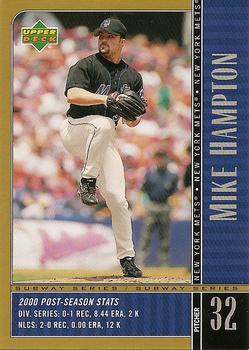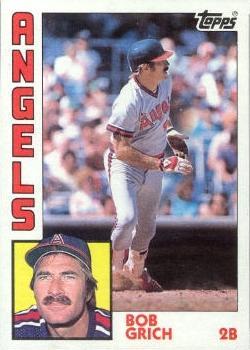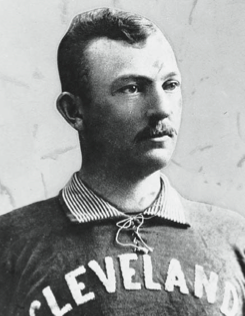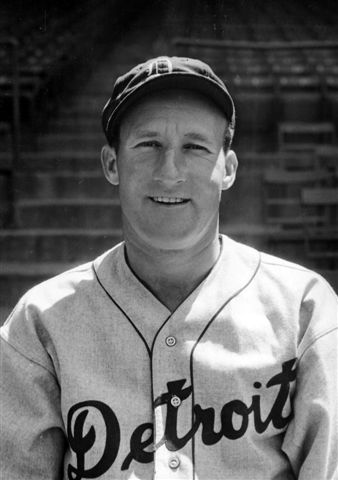October 9, 1928: Sultan of Swat smacks three homers to sink the Cardinals in World Series sweep
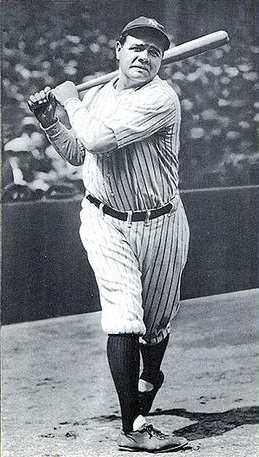 Not even the all-powerful Kenesaw Mountain Landis could predict the future. At 11:00 A.M. on October 8, with a steady rain falling, the commissioner decided to postpone Game Four of the 1928 World Series. When the skies had cleared by 1:00 P.M., Landis looked a bit foolish and many fans were understandably upset.1 In reality, the Cardinals could have used the extra day of rest to regroup, as the gloomy weather matched their demoralized disposition after they suffered their third consecutive loss to the New York Yankees the day before.
Not even the all-powerful Kenesaw Mountain Landis could predict the future. At 11:00 A.M. on October 8, with a steady rain falling, the commissioner decided to postpone Game Four of the 1928 World Series. When the skies had cleared by 1:00 P.M., Landis looked a bit foolish and many fans were understandably upset.1 In reality, the Cardinals could have used the extra day of rest to regroup, as the gloomy weather matched their demoralized disposition after they suffered their third consecutive loss to the New York Yankees the day before.
On the other hand, Yankees manager Miller Huggins had to warn his players against “making whoopee” because of their commanding lead over the Cardinals.2 Any overconfidence would have been well-founded, because the Yankees had overmatched the favored Cardinals in the first three games. Yankees pitchers stifled the Cardinals’ offense, while Lou Gehrig was terrorizing St. Louis pitching. But Babe Ruth would steal the limelight in the final game.
The Cardinals sported their new game uniforms for Game Four before a home crowd of 37,331. The Redbirds had been prevented from wearing them in Game Three because many of them didn’t fit.3 However, the new uniforms and an extra day of rest didn’t help the Cardinals alter their fortunes, as the Yankees swept them in the Series for their second consecutive championship.4
Huggins tapped Waite Hoyt for his second starting assignment of the Series. The 29-year-old right-hander had limited the Cardinals to one run on three hits in Game One. He was opposed by lefty Bill “Wee Willie” Sherdel, a 21-game winner who had taken the loss in Game One, giving him three consecutive World Series losses to the Yankees since 1926.
In the first inning Ruth grounded into a double play, which would be his only significant blemish that day. The Cardinals didn’t score in the bottom of the first even though they got two runners on base via a double and a walk.
The Cardinals were able to draw first blood in the bottom of the third inning. Ernie Orsatti, who started in center field in place of the struggling Taylor Douthit, doubled to center field. Andy High advanced Orsatti to third when he beat out a bunt, and Frankie Frisch followed with a sacrifice fly to center field that scored Orsatti.
The Yankees responded in the top of the fourth inning with a solo home run by Ruth over the right-field pavilion roof. Gehrig followed with a walk and Tony Lazzeri singled, but Sherdel got out of the inning without further damage.
Hoyt gave up another run in the bottom of the fourth inning on two costly errors by the Yankees. Earl Smith led off with a single to right field. Rabbit Maranville hit a potential double-play ball to second base. Lazzeri flipped to shortstop Mark Koenig to force Smith but Koenig’s relay was off-target and Maranville advanced to second base. With Orsatti batting, Hoyt threw wildly on a pickoff attempt at second, which allowed Maranville to score and the Cardinals to regain the lead, 2-1.
The Yankees threatened again in the fifth and sixth innings, but were unable to score, leaving a total of five runners on base.
With one out in the top of the seventh inning, Sherdel got two strikes on Ruth. When Ruth turned to argue the second strike call, Cardinals catcher Earl Smith promptly whipped the ball back to Sherdel, who then abruptly threw an apparent third-strike pitch to Ruth. However, umpire Cy Pfirman quickly declared a “no pitch.” Cardinals manager Bill McKechnie and his players argued the umpire’s decision, but to no avail. After Ruth and Sherdel exchanged heated words, Ruth got his revenge, belting his second home run of the game to tie it.5 Gehrig immediately followed with another homer, his fourth of the Series, to give New York a 3-2 lead.
Up to that point, Sherdel had kept the Yankees in check. After the game, baseball pundits argued that perhaps he had become unnerved by the umpire’s call. Official scorers commented that Sherdel had actually made a legal pitch — his feet were on the rubber when he retrieved the ball from the catcher and took a windup, while Ruth was still standing in the batter’s box. However, before the Series a conference between the umpires and the teams decided that use of the “quick return” (also known as quick pitch) would not be allowed, even though the National League had permitted it during the regular season.6
After the back-to-back home runs, Bob Meusel singled, chasing Sherdel. Pete Alexander came on in relief but couldn’t quell the rally. The Yankees scored two more runs — one more charged to Sherdel and one to Alexander. The Yankees had forged a 5-2 lead they would never relinquish.
In the top of the eighth inning, the Yankees scored two meaningless runs, since the Cardinals were already a deflated team. However, the manner in which the Yankees scored put an exclamation point on the way they had dominated the Cardinals in the Series. Cedric Durst, who replaced Ben Paschal in center field at the top of the inning, hit a leadoff home run off Alexander. Then, in his fifth at-bat, Ruth put another layer of icing on the cake for the Yankees when he hit his third home run of the game. Ruth had previously performed this feat against the Cardinals in Game Four of the 1926 World Series.
The Cardinals scored once more in the bottom of the ninth inning before Ruth caught the final out of the game in dramatic fashion: a running catch of Frankie Frisch’s foul fly to left field. Forgetting a gimpy knee that had plagued him during the Series, Ruth chased the ball down near the edge of the extra box seats that lined the playing field and speared it among fans whose papers and scorecards went flying. He ran to the dugout with the ball raised high in the air, while fans screamed for him to toss them a souvenir. The exuberant Ruth kept the ball, taking it to the clubhouse, where he exclaimed as he brandished it, “There’s the ball that says it’s all over!”7
The final score was 7-3. Hoyt pitched a complete game, yielding 11 hits and three walks while striking out eight. He put runners on base in six of his nine innings. Suffering his second loss of the Series, the hard-luck Sherdel also gave up 11 hits and three walks, while yielding four earned runs in 6⅓ innings.
The Yankees’ sweep of the Cardinals was a surprise in some quarters. The Cardinals had been favored because numerous Yankees were banged up, including Herb Pennock (arm), Earle Combs (wrist), Lazzeri (shoulder), Gehrig (beaned in the final game of the season), and Ruth (knee). Furthermore, the Cardinals’ confidence going into the Series was high, since they had defeated the Yankees in the 1926 World Series.8
McKechnie allowed his pitchers to throw to Ruth during the Series, contrary to the strategy Cardinals manager Rogers Hornsby employed in 1926 when St. Louis walked Ruth 11 times. Ruth walked only once in 1928, and he capitalized on the pitches in the strike zone with a then-World Series record .625 batting average.9
The Cardinals’ skipper offered no excuses for his team’s collapse. He remarked in his guest column in the St. Louis Post-Dispatch on October 11, “What other explanation of the rout can there be? Here was a team of healthy athletes opposed to a club supposed to be crippled from Ruth to the clubhouse boy. The crippled team comes on the field and makes the healthy club look like a collection of misfits.”10
Understandably, Ruth received most of the national attention in the World Series for his three round-trippers in Game Four. James Harrison proclaimed in the New York Times, “If there is any lingering doubt, if anywhere in this broad land there were misguided souls who believe that Babe Ruth was not the greatest living ballplayer, they should have seen him today.11
Yet Gehrig arguably had a better overall Series. His four home runs and .545 batting average were momentous, too. His slugging percentage of 1.727 and OPS of 2.433 remain World Series records. Even Ruth himself declared Gehrig the hero of the Series. “(Gehrig) getting on base safely in nine consecutive times at bat deserves all the honors. … We think he’s the greatest coming player in the business. Watch him and see.”12
There were no good numbers on the Cardinals’ side. They batted .206 as a team while their pitchers racked up an ERA of 6.09. (Alexander’s ERA, over five innings, was 19.80.)
The defeat of the Cardinals was the third World Series victory for the Yankees and they were on their way to becoming one of the most storied major-league franchises.13
This article appears in “Sportsman’s Park in St. Louis: Home of the Browns and Cardinals at Grand and Dodier” (SABR, 2017), edited by Gregory H. Wolf. Click here to read more articles from this book online.
Sources
In addition to the sources mentioned in the Notes, the author also consulted:
Baseball-Reference.com.
Cantor, George. Inside Sports World Series Factbook (Detroit: Visible Ink Press, 1996).
Creamer, Robert W. Babe: The Legend Comes to Life (New York: Simon and Schuster, 1974).
Gallagher, Mark. The Yankee Encyclopedia 6th Edition (Champaign, Illinois: Sports Publishing LLC, 2003).
Krueger, Joseph J. Baseball’s Greatest Drama (Milwaukee: Joseph J. Krueger, 1945).
Notes
1 “Cardinal Plumage Droops in Listless Trio of Lost Games,” The Sporting News, October 11, 1928:1.
2 Leigh Montville, The Big Bam (New York: Doubleday, 2006), 276.
3 “Gossip of the Game,” The Sporting News, October 11, 1928: 5.
4 The Yankees had defeated the Pittsburgh Pirates in four straight games in the 1927 World Series.
5 Montville, 277.
6 J. Roy Stockton, “Ruth’s Three Home Runs Enable Yanks to Sweep Series,” St. Louis Post-Dispatch, October 10, 1928: 22.
7 Montville, 277.
8 Montville, 275.
9 John Devaney and Burt Goldblatt, The World Series: A Complete Pictorial History (Chicago: Rand McNally & Company, 1981), 121.
10 William McKechnie, “It Had to Be, All McKechnie Can Say of Rout,” St. Louis Post-Dispatch, October 11, 1928: 28.
11 Montville, 276.
12 Babe Ruth, “We Say It With Base Hits; That’s All — Babe Ruth,” St. Louis Post-Dispatch, October 10, 1928: 22.
13 As of 2016 the Yankees had won a record 27 World Series championships.
Additional Stats
New York Yankees 7
St. Louis Cardinals 3
Game 4, WS
Sportsman’s Park
St. Louis, MO
Box Score + PBP:
Corrections? Additions?
If you can help us improve this game story, contact us.


